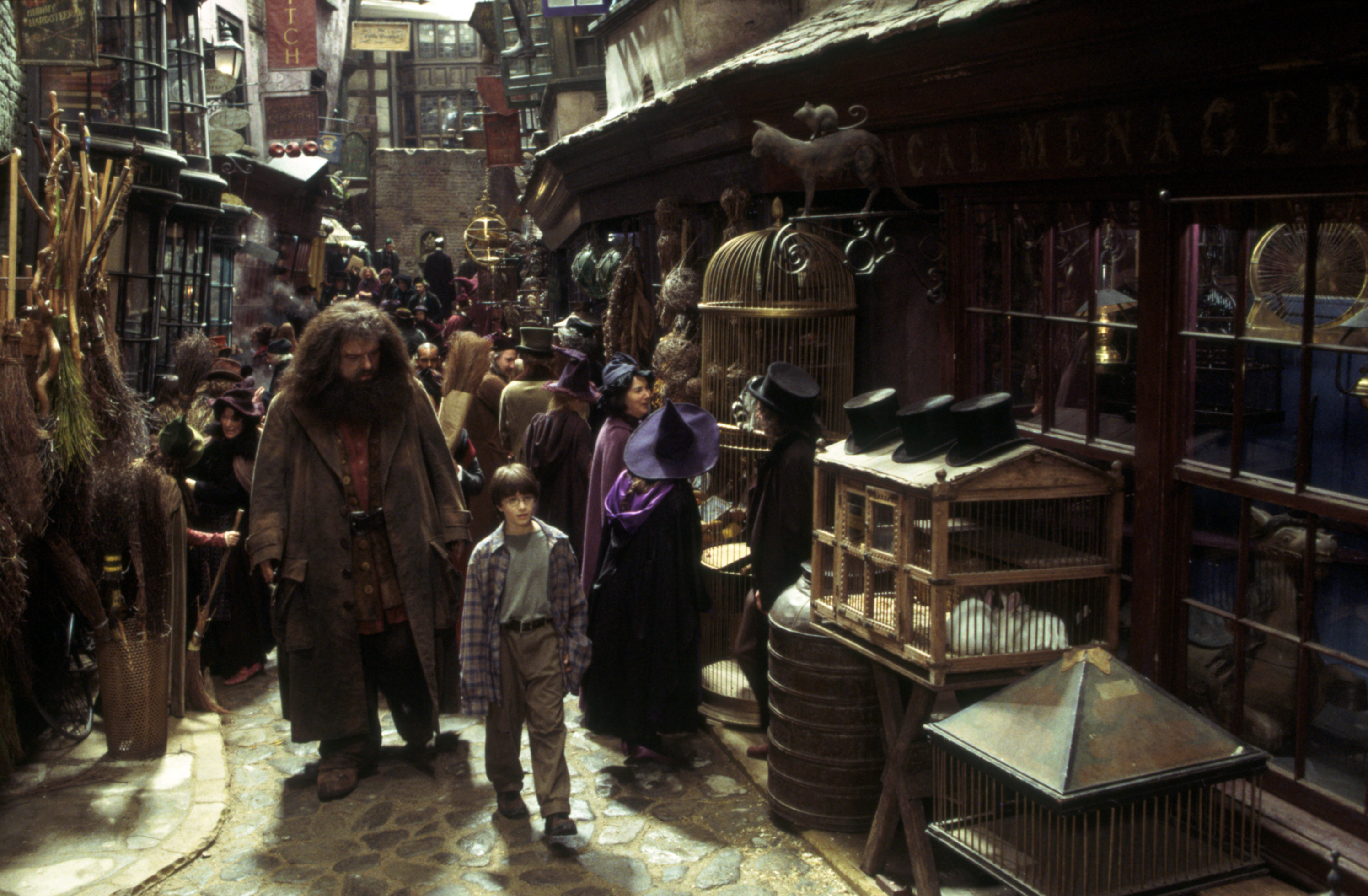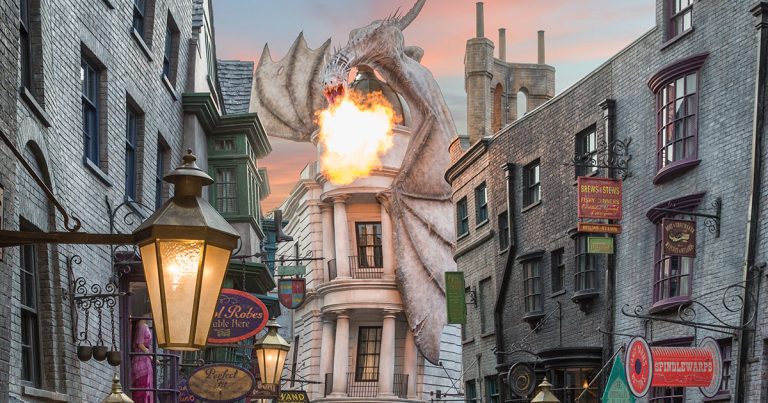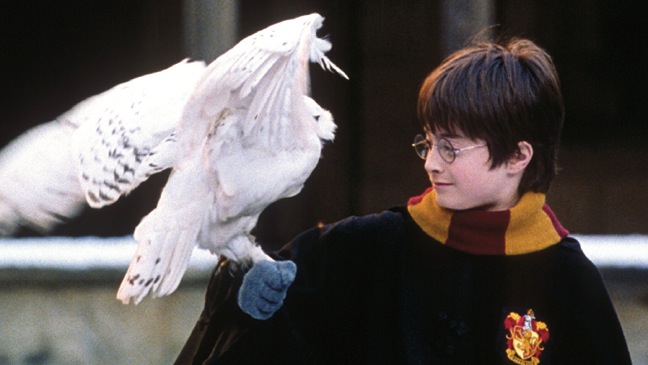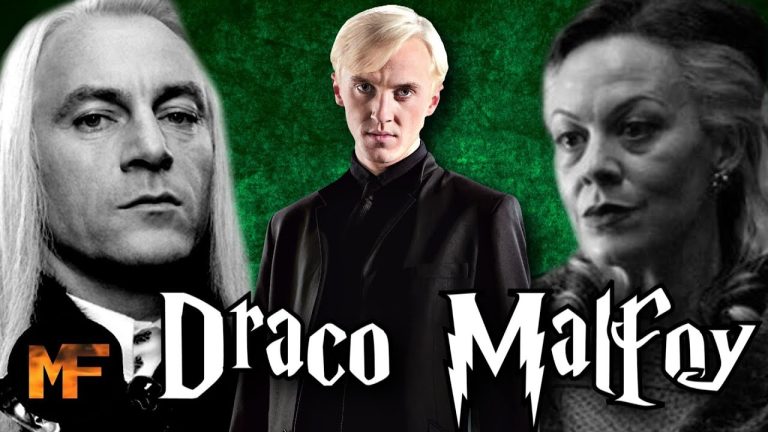The Cinematic Journey Of Diagon Alley In The Harry Potter Movies
Welcome to the enchanting realm of Diagon Alley, a magical and bustling street hidden within the wizarding world of Harry Potter. In this article, we will embark on a cinematic journey through the Harry Potter movies, exploring the captivating portrayal of Diagon Alley on the silver screen. From the iconic shops to the whimsical atmosphere, join us as we delve into the spellbinding details that bring this fantastical location to life.
Step foot into Diagon Alley and prepare to be transported to a world where witches and wizards roam freely. The cinematic portrayal of Diagon Alley in the Harry Potter movies is nothing short of extraordinary. As you wander through the cobblestone streets, you’ll encounter familiar landmarks such as Gringotts Wizarding Bank and Ollivanders, where Harry first acquired his wand. Each shop is meticulously crafted with intricate details, capturing the essence of J.K. Rowling’s vivid imagination.
The magical journey doesn’t end there. The cinematography and visual effects of the Harry Potter movies elevate Diagon Alley to new heights, immersing viewers in a world that feels both fantastical and real. The vibrant colors, bustling crowds, and whimsical architecture create a sense of wonder and awe. Whether you’re a die-hard fan of the books or a casual moviegoer, the cinematic journey through Diagon Alley is sure to leave you spellbound. So grab your wand, hop on your broomstick, and let’s explore the enchanting streets of Diagon Alley in the Harry Potter movies like never before!
Step into the magical world of Harry Potter and embark on a cinematic journey through Diagon Alley. This iconic location in the Harry Potter movies is a bustling street filled with enchanting shops, spellbinding sights, and quirky characters. From Ollivanders wand shop to Weasleys’ Wizard Wheezes, Diagon Alley is a visual feast for Potterheads. The detailed set design and stunning visual effects bring this fictional shopping district to life, immersing viewers in the wizarding world like never before. Explore the hidden gems and secrets of Diagon Alley as you dive into the enchanting world of Harry Potter.

The Cinematic Journey of Diagon Alley in the Harry Potter Movies
Diagon Alley, a bustling and magical street hidden from the Muggle world, holds a special place in the hearts of Harry Potter fans. This enchanting location serves as the gateway to the wizarding world, where witches and wizards can find everything they need for their magical endeavors. Throughout the Harry Potter movie series, Diagon Alley undergoes a cinematic journey, evolving from a mere concept in J.K. Rowling’s books to a breathtaking and immersive on-screen experience. Let’s dive into the captivating transformation of Diagon Alley in the Harry Potter movies.
The Birth of Diagon Alley
In the first installment of the Harry Potter series, “Harry Potter and the Philosopher’s Stone,” Diagon Alley is introduced to viewers as a whimsical and vibrant place. The filmmakers brought the enchanting street to life, staying true to the vivid descriptions in the books. From the crooked buildings and cobblestone streets to the colorful storefronts, every detail was meticulously crafted to transport viewers into the magical world.
The set designers and visual effects teams worked in harmony to create the perfect blend of practical and digital effects. The result was a breathtaking Diagon Alley that felt both authentic and fantastical. From Ollivanders Wand Shop to Gringotts Wizarding Bank, each location within Diagon Alley exuded its own unique charm, making it a delight to explore for both the characters and the audience.
The Evolution of Diagon Alley Design
As the Harry Potter film series progressed, so did the design and visual effects techniques used to bring Diagon Alley to life. In “Harry Potter and the Chamber of Secrets,” we see Diagon Alley in a darker and more foreboding light. The set designers incorporated Gothic elements and eerie lighting to reflect the overarching tone of the film. This evolution in the visual aesthetic of Diagon Alley added depth and complexity to the cinematic experience.
In subsequent movies, such as “Harry Potter and the Prisoner of Azkaban” and “Harry Potter and the Half-Blood Prince,” Diagon Alley underwent further transformations. The set designers continued to push the boundaries of creativity, introducing new shops and expanding the existing ones. The attention to detail was unparalleled, with each storefront telling its own story and adding layers of authenticity to the magical world.
Diagon Alley in the Fantastic Beasts Series
The magic of Diagon Alley didn’t end with the conclusion of the Harry Potter film series. In the spin-off prequel series, “Fantastic Beasts and Where to Find Them,” audiences were treated to a glimpse of Diagon Alley in a different era. Set in the 1920s, the Fantastic Beasts movies take us back in time to a Diagon Alley that is both familiar and yet intriguingly different.
The production designers once again worked their magic, recreating the iconic street with a nostalgic twist. The attention to detail was remarkable, capturing the essence of the 1920s while staying true to the established design of Diagon Alley. This seamless integration of the past and present added a new layer of depth to the cinematic universe, further immersing viewers in the world of magic and wonder.
The Legacy of Diagon Alley
The journey of Diagon Alley in the Harry Potter movies has left an indelible mark on popular culture and the hearts of fans worldwide. Its cinematic evolution showcases the dedication and creativity of the filmmakers, who brought J.K. Rowling’s magical world to life in a way that captivated audiences of all ages.
Diagon Alley continues to inspire and enchant, not only through the movies but also through the Wizarding World theme parks. These immersive experiences allow fans to step foot into the enchanting street, bringing the cinematic journey full circle. Whether you’re exploring the original Diagon Alley in the Harry Potter movies or experiencing its legacy in the Fantastic Beasts series, the magic of this iconic location will always hold a special place in the hearts of fans.
As we reflect on the cinematic journey of Diagon Alley, we are reminded of the power of storytelling and the ability of movies to transport us to magical worlds beyond our imagination. The attention to detail, the captivating designs, and the dedication of the filmmakers have made Diagon Alley an iconic part of the Harry Potter franchise. So, grab your wand and step into the enchantment of Diagon Alley, where magic awaits around every corner.
The Cinematic Journey of Diagon Alley in the Harry Potter Movies
Diagon Alley is a magical place in the Harry Potter movies that comes to life through stunning visuals and captivating storytelling.
- 1. Diagon Alley is the main shopping street for wizards and witches, filled with unique shops and bustling activity.
- 2. The set design of Diagon Alley is incredibly detailed, transporting viewers into a world of magic and wonder.
- 3. The magical shops in Diagon Alley, such as Ollivander’s Wand Shop and Weasleys’ Wizard Wheezes, offer a wide array of enchanting products.
- 4. Diagon Alley serves as a gathering place for the wizarding community, where characters like Harry, Ron, and Hermione often meet their friends.
- 5. The journey through Diagon Alley in the movies showcases the awe and excitement of discovering the magical world hidden within London, adding depth and richness to the overall Harry Potter experience.
Frequently Asked Questions
Here are some frequently asked questions about the cinematic journey of Diagon Alley in the Harry Potter movies.
1. How was Diagon Alley created for the Harry Potter movies?
In the Harry Potter movies, Diagon Alley was brought to life through a combination of practical sets and visual effects. The production team built a physical set for Diagon Alley at Leavesden Studios in London, which included the iconic storefronts and cobblestone streets. The set was meticulously designed to capture the magical and whimsical atmosphere of the wizarding world.
In addition to the physical set, visual effects were used to enhance and expand Diagon Alley. Computer-generated imagery (CGI) was employed to add details and elements that were impossible to create in real life, such as floating broomsticks and animated shop signs. The seamless integration of practical sets and visual effects helped create a truly immersive and enchanting cinematic experience for audiences.
2. What are some notable locations in Diagon Alley?
Diagon Alley is filled with various shops and establishments that are essential to the wizarding world. Some notable locations include Ollivanders Wand Shop, where Harry Potter first obtains his wand; Weasleys’ Wizard Wheezes, the joke shop owned by Fred and George Weasley; and Gringotts Wizarding Bank, where the characters undertake a daring heist in the final film.
Other notable locations include Flourish and Blotts, the bookstore where Gilderoy Lockhart holds a book signing; Madam Malkin’s Robes for All Occasions, where Hogwarts students purchase their school robes; and The Leaky Cauldron, the entrance to Diagon Alley from the Muggle world. Each location in Diagon Alley contributes to the rich tapestry of the wizarding world and adds depth to the cinematic journey.
3. How does Diagon Alley contribute to the overall storytelling in the Harry Potter movies?
Diagon Alley serves as an important setting in the Harry Potter movies, not only as a magical shopping district but also as a reflection of the wizarding world’s culture and society. The intricate details of the shops, the bustling crowds, and the interactions between characters in Diagon Alley help immerse the audience in the magical world and enhance the storytelling.
Furthermore, Diagon Alley acts as a gateway to the wizarding world for both the characters and the audience. It is through Diagon Alley that Harry Potter discovers his true identity as a wizard, meets important characters, and embarks on his journey at Hogwarts School of Witchcraft and Wizardry. The cinematic portrayal of Diagon Alley adds depth and dimension to the overall storytelling and contributes to the sense of wonder and adventure that defines the Harry Potter series.
4. How did the filmmakers create the magical atmosphere of Diagon Alley?
The filmmakers used various techniques to create the magical atmosphere of Diagon Alley in the Harry Potter movies. The physical set was designed with meticulous attention to detail, including the use of practical effects such as smoke, lighting, and intricate props. These elements helped bring the magical world to life and transport the audience into the enchanting realm of Diagon Alley.
In addition, the use of visual effects played a crucial role in enhancing the magical atmosphere. CGI was used to create magical creatures, animate shop signs, and add magical elements to the set. The combination of practical effects and visual effects worked together to create a truly immersive and awe-inspiring cinematic experience.
5. How does Diagon Alley evolve throughout the Harry Potter movie series?
Diagon Alley undergoes various transformations throughout the Harry Potter movie series, reflecting the changing circumstances and challenges faced by the characters. In the earlier films, Diagon Alley is depicted as a bustling and vibrant shopping district, filled with magical wonders and excitement.
However, as the series progresses and the threat of Lord Voldemort looms larger, Diagon Alley takes on a darker and more foreboding tone. The once lively streets become deserted, shops are boarded up, and the sense of danger and uncertainty permeates the atmosphere. These changes in Diagon Alley mirror the overarching narrative of the Harry Potter series and contribute to the overall cinematic journey of the characters.

Harry Potter and the Sorcerer’s Stone (2001) – Diagon Alley Scene
Final Summary: The Magical Conclusion
And just like that, our journey through the enchanting streets of Diagon Alley comes to an end. We have explored the vivid and wondrous world of Harry Potter, delving into the cinematic portrayal of this iconic location. From the bustling shops to the hidden secrets, Diagon Alley has captivated audiences around the globe.
Through the expert craftsmanship of the filmmakers, we have witnessed the transformation of J.K. Rowling’s imagination into a tangible reality. The attention to detail, the vibrant colors, and the awe-inspiring set designs have brought Diagon Alley to life in a way that continues to mesmerize fans.
As we reflect on this cinematic journey, it’s clear that Diagon Alley holds a special place in the hearts of Harry Potter enthusiasts. It represents not only a hub of magical commerce but also a symbol of hope, friendship, and the power of the human spirit.
So, whether you’re a muggle or a wizard, Diagon Alley will forever remain a cherished destination in the realm of cinema. It’s a place where dreams are nurtured, where imagination knows no bounds, and where the magic of storytelling lives on.






